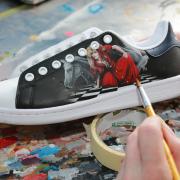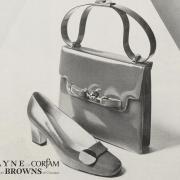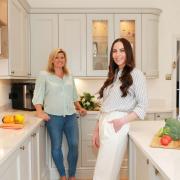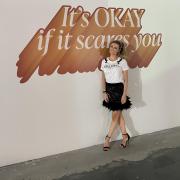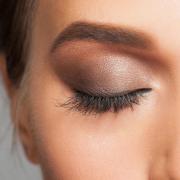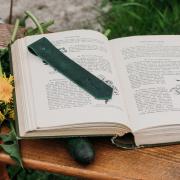Bramall Hall is one of the finest early medieval halls surviving in the UK. Its continued presence is likely down to the fact it has had just five owners in its entire history (if one can count a family line spanning 500 years as a single owner).
It is believed to have been built around 1380, when John de Davenport married Alice de Bromale, daughter of Matthew de Bomale, who had been passed the estate by the second Baron of Dunham Massey. They settled on the 2,000-acre estate and began a family line that survived until the mid-19th century.

It is now owned, managed and beautifully looked after by Stockport Council, and offers a fascinating learning experience for its visitors. Museums officer Linn Robinson says: ‘We work hard to ensure people can have a relationship with Bramall Hall from a very early age. It’s important to connect people to buildings like this, to help them understand they are for everybody. ‘In presenting Bramall Hall, we have homed in on two periods of its history – the medieval and the Victorian. The hall was built and lived in by the Davenport family, and much of what is here is original to the medieval period. In 1880, it was bought by a very wealthy calico merchant, Thomas Nevill, and given to his son, Charles, as a wedding gift. Charles and his wife, Mary, were interested in architecture and Charles was a patron of the arts and traditional crafts. He brought in renowned Manchester architect George Faulkner Armitage and they undertook a beautiful, sympathetic restoration of Bramall Hall, which can be seen throughout the building.’

The restoration undertaken by Charles Nevill and Faulkner Armitage is so sympathetic it’s hard at first sight to see what is original and what has been restored, added or replaced by the Nevills.
As with all medieval halls owned by wealthy, landowning families, the grandest space in the building was the Great Hall, which at Bramall is the oldest remaining part of the building, built in the early 1400s. This was the place where all the estate activity took place, where merchants would visit, where the Davenports’ stewards would call on their master and where guests arriving would be impressed by the wealth of their host. It was also the space for celebrations, with the family and most-honoured guests sitting at a table on a raised platform and the rest placed at tables in front of them, in descending order of importance.
There is, in the far-left corner of the Great Hall, a large, ancient, dark oak door and, set within, a much smaller door, known as a wicket gate, the door through which visitors must enter after hours when the family was at rest or not expecting visitors. The wicket gate was part of the medieval security system at all grand houses and castles. The door is short and narrow, set high above floor level, making it impossible for more than one person to enter at a time, crouched low while stepping high, and certainly not while wielding a weapon, and is easy to slam shut in the face of unwanted visitors.

‘The door was not originally in this location,’ Linn says, ‘it would have been an external door and has been brought in at some point.’
By the late 1400s, the Great Hall’s purpose had changed. Extended, sideways and upwards, to create new rooms for the family and their servants, it became a grand entrance room, designed to impress upon visitors the riches, taste and power of the Davenports. The front elevation was fitted with windows, in a massive visual display of wealth, and these contain the coats of arms of other prominent families the Davenports were connected to by blood or marriage.
Not everything in the Great Hall is medieval, however – the Nevills left their mark here too. ‘The fireplace here today was designed by George Faulkner Armitage, who at that time was right on the cusp of the Arts and Crafts movement in Britain. You can see his distinctive style in the fire hood, in the soft ripples of the metalwork. He is also responsible for all the hinges, door handles and the light sconces throughout the hall; they are exquisite.’

On the first floor lies one of the most extraordinary rooms at Bramall Hall, the Solar. This was a room, or suite of rooms, common to most grand medieval houses, and designed to be the family’s private living and sleeping quarters. It would have been a calm oasis away from the crowds and smells of the essentially public rooms below. At Bramall, the Solar was built at the end of the 15th century and, as the private rooms for the family, was used for entertaining privileged guests. Not surprisingly, the Davenports wanted to create a beautiful space in which to spend their quiet time, and in the 1530s commissioned wall paintings that mimicked luxurious tapestries, complete with images that made clear the morality of the Davenports.
‘These paintings are what are known as “grotesque work”, with lots of hidden messages within,’ Linn says. ‘There are demons and monsters lurking in the foliage – a warning that there are lots of dangers waiting if you don’t live well.’

Wall paintings from this era are incredibly rare and these may only have survived because at some point they were covered over, luckily not with paint but with boards, leaving a gap and keeping them safe until they were rediscovered by the Nevills in the 19th century.
Just a step across the landing takes visitors on a full 350 years, to the time of Charles and Mary Nevill, in what is now called the Nevill Room. Once part of the suite of rooms making up the Solar, the room was overhauled by Charles and Mary, who added a bay window (using the same style of leaded glass as is found in the Great Hall) and a vast fireplace, again by George Faulkner Armitage.

‘Charles added the panelling and bay windows, dropped the ceiling, and created the fireplace, which is quite spectacular – the fire dogs are just a thing of beauty. This would have been Charles’s room, where he entertained his friends and displayed his collection of objects gathered on their many journeys to the Far East. This is a room showcasing Victorian ostentation, just as the Solar was a display of 16th-century wealth. We were able to furnish this room as it would have been as we have the auction catalogues and so know what was here. Even here though, Charles wanted to preserve what he could of the past, and you can see a doorway, filled in with lathe and plaster at some point, which, rather than hide away behind panelling he left on display.
‘Charles and Mary had an absolute love affair with this house, and it is thanks to them that it stands here as it does today,’ says Linn.

The Withdrawing Room, which fills the space above the Great Hall, was added in the late 1570s and would have replaced the Solar suite as the place in which the Davenports entertained guests. There remains here the only original Elizabethan pendant ceiling left at Bramall, along with the original fire surround, containing the motto of the Order of the Garter, Honi Soit Qui Mal y Pense (Shame on those who think it evil) on a representation of a garter, surrounding the shield of the royal coat of arms of Queen Elizabeth I, topped with the words Vive la Royne, or Long Live the Queen, a public acknowledgment of the family’s loyalty to the crown – and a very sensible move in those uncertain times.

Bramall Hall has almost too much to take in on one visit. The Chapel, with a medieval wall painting of the Passion of Christ, which was painted over following the Reformation of 1534 and replaced in Elizabethan times by the Ten Commandments; The Paradise Room, where Dorothy Davenport (1562-1639) gave birth to 11 children, and spent 26 years stitching bed hangings depicting the Garden of Eden (hence the name of the room); The Davenport Bedroom; Mary Nevill’s Boudoir; Charles and Mary Nevill’s dining room; the kitchen quarters (used throughout the hall’s life, although updated by Charles Nevill, who enlarged the windows and improved conditions for his servants; and the female servants’ quarters. There is too, of course, the 70 acres of parkland that is free of charge to explore, but that will have to wait for another day.. stockport.gov.uk/topic/bramall-hall

FRIENDS OF BRAMALL HALL
The Friends of Bramall Hall and Park are a vital part of the ongoing preservation of the hall and parklands, providing resource to assist with everything from restoration to weeding the flower beds.
‘They’re wonderful,’ Linn says. ‘They support us with everything from fundraising to gardening to helping us open our doors, volunteering at front of house and in the running of our events.
‘At Christmas, 30 volunteers come to help with the floral designs and decorations, which we most certainly couldn’t achieve without them. ‘They’re always looking for new members, so please, if you are interested in joining, visit stockport.gov.uk/groups/friends-of-bramall-hall to learn more.’
The photography for this feature was kindly supplied by Christopher John, a professional photographer specialising in landscapes, architecture and interiors. christopherjohnphotography.co.uk







